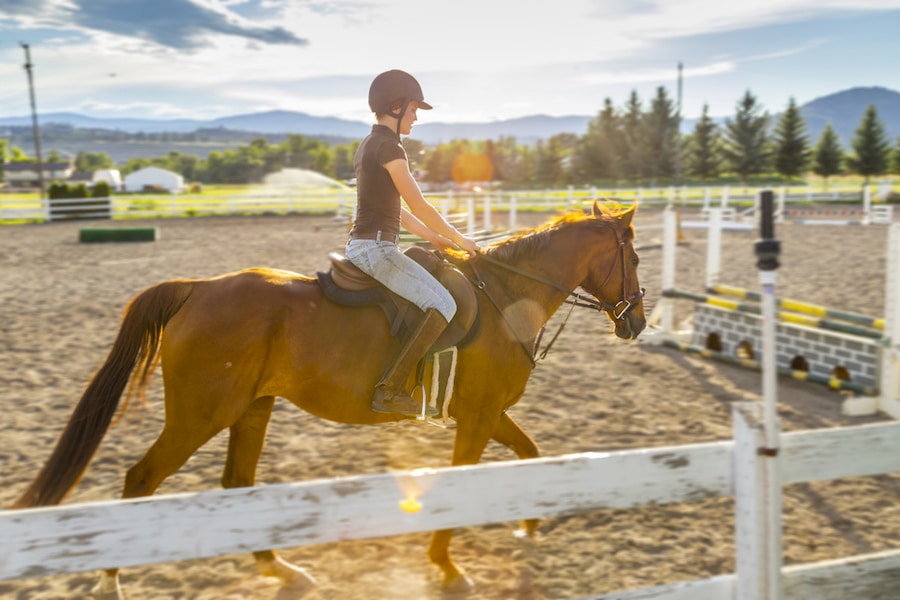For many, reading anything about practicing yoga on an equestrian blog is going to create some confusion. Yoga might be good for the body and mind, but what does it have to do with horses?
The answer to this question rests in the mats.
While a relatively new material, yoga mat arena footing is proving a powerful footing solution for many different arena compositions and ridings styles. Products like FoamFooting are recycled, eco friendly, and offers a low-cost and low-maintenance alternative to natural and synthetic footing materials alike.
Below, we break down a few of the main benefits of using yoga mat footing materials compared to other synthetic alternatives.
Reliable Arena Surface Stabilization
Equestrians know that different disciplines have different footing needs. Some require more traction, some less, and some still do best with a little bit more spring on the arena surface.
No matter what the need, natural materials are notoriously difficult to regulate, especially if your arena is heavily used or exposed to the elements. An arena surface that rode perfectly one week might experience puddling and total decompensation after heavy rains. Similarly, an extended dry spell might create a shifty surface, increasing the risk of sports injury to your horses.
Many believe that materials such as rubber mulch solve this problem. While they help, what individuals underestimate the idiosyncrasies that come with the material.
Made from shredded car tires, rubber mulch often offers too much bounce for most riders. As such, they use less of the product and never reach the full benefits a natural rubber surface has to offer.
Using yoga mat footing solves this problem as the material, while still manufactured, is far more forgiving to several riding styles.
Dust-Free Footing Means Healthy Horses
While sand and stone dust are common footing materials in every horse arena, the presence of dust quickly becomes problematic without proper maintenance. Dust control challenges are especially demanding in arenas in drier climates— even if your footing absorbs moisture relatively well, it will dry out quicker than you can maintain.
There are several low-dust and dust-free options for footing additives. These are often necessary additions to arenas as excess dust causes a variety of health concerns for horse and rider but are not all equally effective.
A popular resolution to this dilemma is polymer-coated arena additives. Initially solving the immediate issue of dust, what many equestrians find is that temperature fluctuation creates instability in how the arena performs over the long term. The result is footing that clumps too much, too little, and even displays inconsistent moisture retention.
Because yoga mats don’t need watering and don’t create dust, mixing them into your existing footing can give you the cushioning of sand without the added maintenance of aggressive dust control.
Performance Control for Picky Arenas
For outdoor and indoor arenas alike, finding a balance of materials that promote traction, reduce impact force, and retain moisture is an art form in and of itself. For arenas located in areas where they experience extreme fluctuations in weather and climate, it makes this process all the more challenging.
Yoga mat footings like FoamFooting solve this problem by being resistant to changes in weather, being a dust-free alternative, and having less of the traction concerns found in other footings such as sand and rubber mulch.
Arena Footing is a Work in Progress
Riders know when their footing needs work. It affects everything about their sport and ability to perform while also impacting the wellbeing of their horses. Knowing your options about footing materials that are effective and easy to implement is a central aspect of owning an arena.
At Performance Footing, we understand the importance of this process because we are equestrians ourselves. Through a lifetime of participating in equestrian activities, we have developed and identified the best products for equestrians to use to help them cultivate safe arenas for brilliant sportsmanship.
Want to speak with one of our experts? Don’t hesitate to reach out.
